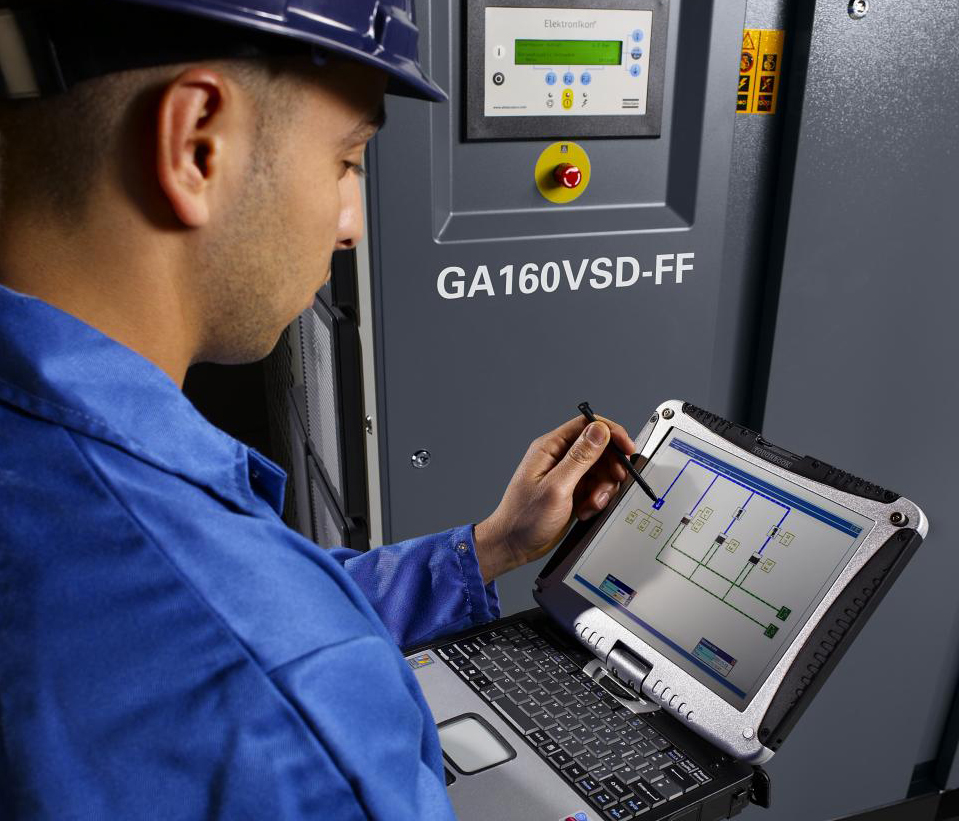Proper Equipment and Compressed Air Quality Testing Assure Clean Air
High-quality compressed air is a necessity in most industries – and some in particular, such as food and beverage, pharmaceuticals and medical device manufacturing, must meet stringent ISO quality testing guidelines to safeguard the purity of their compressed air. Installing top-notch air compressors and components and regularly conducting industrial air quality testing will help ensure that the air that is supplied to processes is free of contaminants, preventing equipment damage and protecting the integrity of finished products.
Before this blog discusses compressed air quality testing and supplies information on equipment that can help manufacturers protect their air, let’s first examine the importance of high-quality compressed air on equipment, product integrity and the bottom line.

The difference between high-quality and low-quality compressed air can have a significant impact on a manufacturing operation. High-quality compressed air – treated air that has little to no contamination – can ensure product integrity, minimize maintenance and increase the efficiency of processes.
On the other hand, air that is tainted with particulate, oil or moisture can result in finished product contamination and quality issues, reduce the energy efficiency of the compressed air system and manufacturing processes, cause premature wear and tear and increase the maintenance requirements of equipment, significantly escalating operating costs.
The Importance of Compressed Air Quality Testing
Because of the negative impact that impure compressed air can have on finished products, operational efficiency and profits, compressed air quality testing is a critical component of operating a compressed air system. When conducted properly, industrial air quality testing can identify contaminants such as particulates, oil and moisture and helps maintain the required air quality level.
ISO 8573-1 is an internationally recognized system that applies to the purity of compressed air in a variety of industrial settings. The first part of ISO 8573-1 establishes air quality classes for each contaminant type by industry, including general manufacturing, food and beverage processing and medical device manufacturing. The remaining parts of the ISO quality testing standard outline compressed air quality testing protocols and testing schedules for particulate contaminants, water and oil.
Following the guidance of ISO 8573-1 will assure manufacturers that their treated air meets the appropriate quality levels. More detailed information on ISO 8573-1, air quality level requirements by industry and information on compressed air quality testing methods and schedules can be found here.
How Can You Test the Quality of Compressed Air?
While ISO 8573-1 provides guidelines on testing protocols, there are services that can assist with the management of compressed air quality testing for regulated industries, those at high risk for contamination and those using equipment, such as sensitive robotics, with instrument air standards.
For example, JHFOSTER offers industrial air quality testing services designed to ensure compliance with ISO quality testing standards so manufacturers know whether their air meets quality requirements for their industry and equipment in an effort to avoid product degradation and damage to machinery.
Quarterly sampling for compressed air quality testing using a service such as that offered by JHFOSTER as outlined in ISO 8573-1 is generally recommended, but industries with stringent air quality requirements or those with high risk for contamination may need to test with greater frequency.
Regular industrial air quality testing permits early detection of contamination issues and allows manufacturers to take corrective measures before experiencing equipment breakdowns and product defects. However, if, upon conducting quality testing, it is found that a manufacturer’s air quality is low, it might be wise to take a look at the air compressor and other system components.
Using the best equipment available to treat, purify and dehumidify the air before it enters the compressed air system and properly maintaining it goes a long way toward consistently providing high-quality, pure air.
In addition to installing an oiled or oil-less (for industries where oil contamination is not permissible) other suggested equipment is available to help improve or maintain the quality of compressed air, including:
- Refrigerated air dryers: The refrigeration system in refrigerated air dryers cools the incoming compressed air, allowing the water to condense and drain, effectively removing moisture from the system and the compressed air.
- Desiccant air dryers: These adsorption dryers remove water vapor from compressed air by passing it over an adsorbent desiccant material, preventing moisture from degrading air quality.
- Filters: Air compressor Inlet filters and downstream compressed air treatment filtration effectively block contaminants from entering the air compression system, preventing equipment damage and keeping the air as pure as possible, while oil filters capture oil particulate to prevent oil contamination.
- Monitoring devices: Data loggers, incorporate high-quality sensors to collect and store information about system pressure, temperature, dew point, flow rate or harmful gasses. Having this data permits early detection of potential issues that may impair the quality of the compressed air.
The Advantages of Compressed Air Quality Testing
In addition to ensuring that the treated air meets the necessary quality requirements for sensitive equipment, industry air quality standards and product integrity, using industrial air quality testing methods or services ensures high quality air.
The assurance of compressed air quality testing provides several operational benefits, including:
Cost savings
Making certain that the air is as pure as possible through the use of high-quality equipment and compressed air quality testing minimizes costs associated with equipment damage, product spoilage and degradation, inefficient systems and non-compliance with industry air quality standards.
Maximum equipment lifespan
Proper compressed air treatment and industrial air quality testing help to reduce maintenance requirements and extend the life of air compression system components and the pneumatic machinery and tools the system powers by minimizing corrosion and wear and tear.
Energy efficiency
Using contaminant-free air will reduce energy-consuming pressure drops associated with clogged air delivery lines, helping to keep electric bills in check.
Reliable moisture control
By properly removing moisture from the compressed air system and testing to be sure that moisture contamination is as low as possible, rust and corrosion can be prevented, ensuring that equipment does not experience damage and finished products are not contaminated.
Compressed air quality testing is an essential part of any manufacturing operation, especially those in highly regulated industries such as food and beverage, pharmaceutical and medical device manufacturing because it guarantees that the air used is contaminant free and as pure as possible. To learn more about industrial air quality testing services, trusted air compressors and air treatment equipment and how they can minimize operational expenses and protect finished product integrity, please contact the air compression experts at JHFOSTER, a Tavoron company, today.
